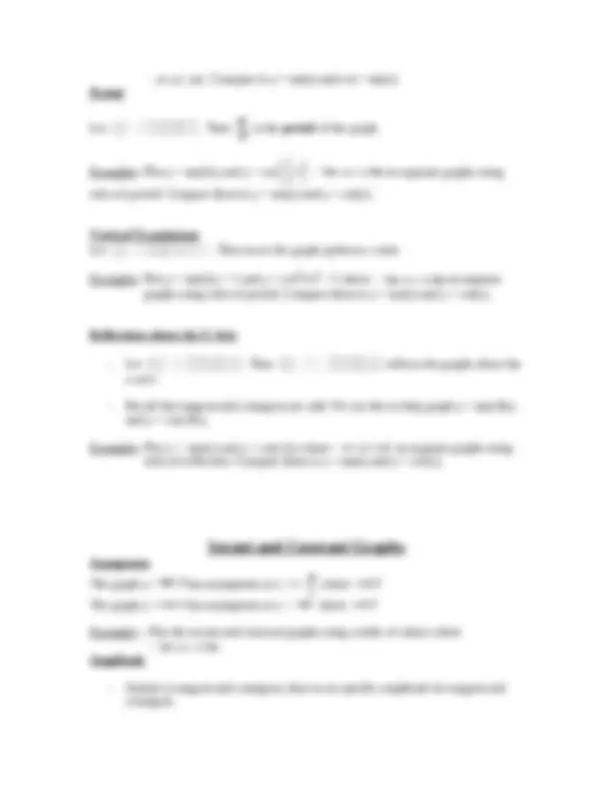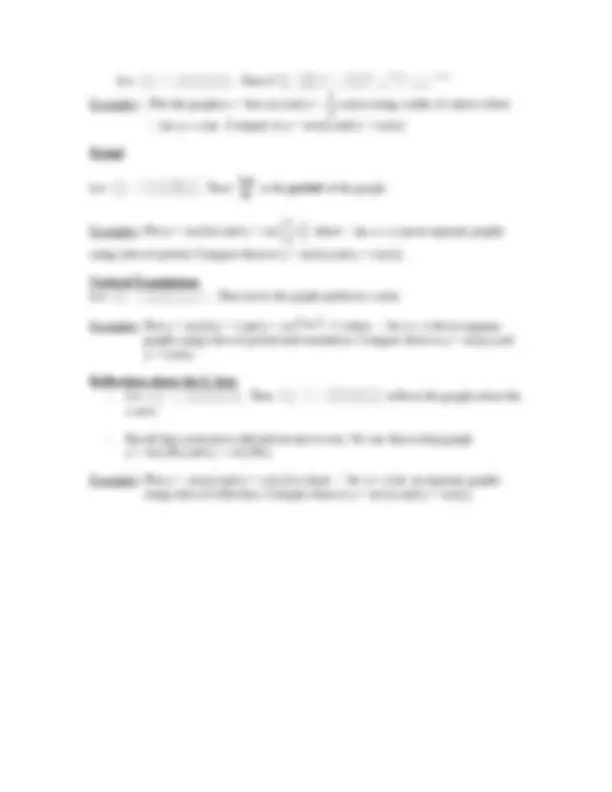




Study with the several resources on Docsity

Earn points by helping other students or get them with a premium plan


Prepare for your exams
Study with the several resources on Docsity

Earn points to download
Earn points by helping other students or get them with a premium plan
Community
Ask the community for help and clear up your study doubts
Discover the best universities in your country according to Docsity users
Free resources
Download our free guides on studying techniques, anxiety management strategies, and thesis advice from Docsity tutors
An in-depth exploration of various trigonometric graphs, including sine, cosine, tangent, secant, and their respective amplitudes, periods, and vertical translations. Learn how to plot these functions using tables of values and understand their key features.
Typology: Study notes
1 / 4

This page cannot be seen from the preview
Don't miss anything!



cos( )
sin( )
y A x
y A x
cos( )
sin
y Bx
y Bx
y x c
y x c
cos( )
sin( )
cos( )
sin( )
y A x
y A x
cos( )
sin( )
y A x
y A x
cot( )
tan( )
y A x
y A x
y A rise fall slower
y A rise fall faster
Let
csc( )
sec( )
y A x
y A x
. Then if
y A closer to x axis
y A further from x axis
Examples – Plot the graphs y = 3sec (x) and y =
2
1
csc(x) using a table of values where
2 x 2 . Compare to y = sec(x) and y = csc(x)
Period
Let
csc( )
sec
y Bx
y Bx
. Then
B
2
is the period of the graph.
Examples: Plot y = sec(3x) and y = csc
x
2
1
where 2 x 2 on separate graphs
using rules of period. Compare them to y = sec(x) and y = csc(x).
Vertical Translations
Let
y x c
y x c
csc( )
sec( )
. Then move the graph up/down c units
Examples: Plot y = sec(2x) + 1 and y = csc
3 x +1 where 2 x 2 on separate
graphs using rules of period and translation. Compare them to y = sec(x) and
y = csc(x).
Reflections about the X-Axis
csc( )
sec( )
y A x
y A x
. Then
csc( )
sec( )
y A x
y A x
reflects the graphs about the
x-axis
y = sec(-Bx) and y = csc(-Bx).
Examples: Plot y = -sec(x) and y = csc(-2x) where
2 x 2 on separate graphs
using rules of reflection. Compare them to y = sec(x) and y = csc(x).